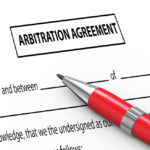Forced into Bankruptcy: Could Unsecured Creditors File an Involuntary Bankruptcy Petition Against Your Business?
Co-authored by Ramon Ryan, SRVH Summer Associate
Last month, investment firm Ashkenazy Acquisition surprised the New York real estate world when it filed an involuntary Chapter 11 petition to force the glamorous Surrey Hotel on the Upper East Side into bankruptcy. What prompted the move? Before we examine that, it’d be helpful to understand what an “involuntary bankruptcy” is.
We often hear that a company has been “forced” into bankruptcy, but in reality, the company’s board of directors usually made a voluntary decision to file bankruptcy given the company’s financial circumstances or creditor actions. A true involuntary bankruptcy is when a creditor (or group of creditors) forces a debtor into bankruptcy without the debtor’s consent.
We often hear that a company has been “forced” into bankruptcy, but in reality, the company’s board of directors usually made a voluntary decision to file bankruptcy given the company’s financial circumstances or creditor actions. A true involuntary bankruptcy is when a creditor (or group of creditors) forces a debtor into bankruptcy without the debtor’s consent. Section 303 of the Bankruptcy Code states that if a company has 12 or more creditors, an involuntary bankruptcy petition requires three or more creditors whose claims are not contingent as to liability and those claims total more than $16,750 when aggregated. If the company has fewer than 12 creditors, it only takes one qualifying creditor to file an involuntary petition.
 One reason unsecured creditors may file an involuntary petition is because they face an overly aggressive secured lender. Perhaps the debtor’s business has value as a going concern, which would be lost if the secured creditor liquidated its collateral. The filing of an involuntary petition may give a trustee a chance to briefly operate the debtor’s assets and sell them at fair market or going concern value, as opposed to liquidation. Another reason could be that the unsecured creditor wants (or needs) the debtor to continue in business and suspects the debtor has different plans.
One reason unsecured creditors may file an involuntary petition is because they face an overly aggressive secured lender. Perhaps the debtor’s business has value as a going concern, which would be lost if the secured creditor liquidated its collateral. The filing of an involuntary petition may give a trustee a chance to briefly operate the debtor’s assets and sell them at fair market or going concern value, as opposed to liquidation. Another reason could be that the unsecured creditor wants (or needs) the debtor to continue in business and suspects the debtor has different plans.
This brings us back to Ashkenazy Acquisition. The investment firm took over a $45 million leasehold mortgage on the Surrey Hotel in 2018. Due to COVID-19, hotel business has slumped, which is likely one reason the Surrey Hotel missed its payment in April on its lease. In its petition, Ashkenazy stated that it suspects the hotel is working with the leaseholder on a plan to default, which would free up the property for the leaseholder. If successful, any collateral that Ashkenazy Acquisition had in the hotel would be lost in the process. So Ashkenazy Acquisition acted preemptively by attempting to push the hotel into bankruptcy, which, per Ashkenazy, would allow for the lease to be “restructured in bankruptcy over an extended period of time, as hotel operations will likely be slow to rebound.”
One way for a company to fend off an involuntary bankruptcy petition is to show that it is generally paying its debts as they become due. The Bankruptcy Code does not allow for a company to be forced into bankruptcy if it is paying its debts in a timely manner. If it’s clear to creditors that debts are being paid, they are unlikely to attempt to force an involuntary bankruptcy as the consequences for an unsuccessful petition are steep. They can include creditor liability for costs, attorney’s fees, compensatory damages, and possibly even punitive damages. These potential penalties are part of the reason why involuntary bankruptcies have been uncommon in the past. However, we may see involuntary bankruptcies more as creditors get creative in protecting their interests during the COVID-19 pandemic.
Photo by nito from Shutterstock





